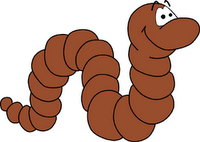
I was nearly famous. Coming this close to being on the PBS News Hour, I was fully prepared to receive love notes and hate mail, and probably would have. The subject was outpatient mastectomy, and I was for it. My patient made it on; I didn't.
Let's get this part out of the way right off the bat: there's no way I would EVER advocate that mastectomy should be considered an outpatient procedure in the sense that insurance companies would urge or require it. The default mode (as we computer-literate folk would say) is and ought always to be that it's done in the hospital. As with many things, I think that when there are options, women having the right to choose is a good thing. Having done many outpatient mastectomies, I can say with complete confidence that it's safe, amazingly well-tolerated, and, for some women, is better in all ways than being in the hospital. Especially in a hospital where the nurses are made to care for too many patients, or to rotate to specialty areas with which they aren't familiar.
First, some housekeeping basics. Clearly, for the woman having immediate reconstruction, outpatient mastectomy is not appropriate. Maybe in the near future I'll say why I have a mild bias in favor of deferring reconstruction ("mild" being the operative word -- it's a complicated matter which I don't want to get into now, but, as I think more about it, will definitely do so later.) And I'm painfully aware of how devastating the idea of mastectomy can be: even mentioning outpatient surgery as an option is something I've done very selectively. It's not for everyone. But physiologically speaking -- referring here to the impact on the body -- there are several operations that I'd consider more "severe," and which are quite often done as outpatient procedures: gallbladder surgery, gastric banding for obesity, various gynecological procedures.
Poking around inside the abdominal cavity has bigger implications than what is essentially a skin operation. OK: "skin operation" is a little glib. But really, the breast is a modified sweat gland. That lovely form, the symbol of femininity and the object of admiration by men and women alike, that most desirable (here I speak as a heterosexual male person and not as a physician!), soft and warm living poetry stinks like a locker room when you cut into it with an electrocautery device. And when you remove it, the operation is mainly on and under skin, leaving muscle -- where most of the pain comes from -- pretty much alone. The old days of removing the pectoralis major and/or minor, along with swaddling the patient in enormous restrictive dressings, are long gone. So, thankfully, are significant blood loss and hours of anesthesia.
Properly done, mastectomy ought not require blood use, and can be thoroughly carried out in well under an hour. My patients almost always woke up with no pain at all, because I had a way of injecting a long-acting local anesthetic into the field. But even when it wore off, most women were quite surprised at how comfortable they felt. (Nothing in medicine is 100%!) Of those that were hospitalized, the greatest number went home on the first day postop.
You get an idea when you see them: some women would rather not be in the hospital for any of a number of reasons. Privacy. Self-control. Whatever. And there was a time -- which is only marginally better today -- when nurses were so overworked and understaffed that patients didn't always get the sort of care they needed. Drains. Drove me crazy. Leave a drain or two in the area after mastectomy, expect them to be operated properly; otherwise, blood will build up (a "hematoma") and be a source of problems. I wanted them checked frequently and emptied properly; depending on the experience and workload of a given nurse, it might or might not happen. At home, with proper instruction, there was never a problem. So I did more than a few outpatient mastectomies, and neither I nor the women involved had reason to regret them.
In Connecticut, I think it was, a health insurance company is said to have announced it had designated mastectomy as an outpatient procedure. No reason it needed hospitalization; wouldn't pay for it in the hospital unless specifically excepted. People were, justifiably, outraged. There's some controversy as to whether it's actually true that the insurance company made the decision. But it's unquestioned that there has been an uproar, and that Congress has (huzzah) gotten involved, proposing legislation. "Drive-thru mastectomy" is what it came to be called, and it was a rallying cry for many advocacy groups. And, as happens when things get politicized, the truth got sort of swept away.
Once again, I'll say I fully agree: mastectomy has no place on the list of operations mandated as outpatient procedures. (Nor, in my opinion, does the one thing that is generally so mandated, and which is the most egregiously inappropriate: hemorrhoidectomy. Another topic, sometime.) But it absolutely can be done that way.
So, for some reason PBS got wind of it and of all places, it was in the Seattle area that they planned to do a segment on it, on the News Hour. And as luck would have it, the director of the surgery center at which I did most of my outpatient operations was contacted to see if she knew of anyone doing outpatient mastectomy. She gave them my name. I got a call and had a nice conversation with a producer of the show. Great, I thought. I could explain the realities; I made it clear to him that I thought it was very appropriate when the woman preferred it, but in no way should it be required. And, I figured, I'd get a chance to put in a plug for nurses: tell the country what the effect on quality care had been of the steady cuts in hospital reimbursement.
The man seemed quite sympathetic. What he wanted was to follow a woman through the whole thing: show a bit of the operation, film her at home. He needed someone within a fairly short time-frame, and although I saw several women with breast cancer -- as usual -- in the next couple of weeks, none was a candidate. I let the producer know, and asked if he'd like to talk to a patient who'd had it. He would. I contacted a couple of my patients and they were happy to offer themselves. If the piece was produced, I was assured, and if they included my patient, they'd schedule an interview with me, as well.
Time passed, silently vis a vis word from PBS. Until one day I got a call from someone telling me Mr. Producer wanted to let me know the show would be on tonight. What? No me? What about my three minutes of fame? My subsequent offers from Hollywood, the surge in my practice? Well, she said, it's on tonight.
It started well enough. The first patient profiled was mine, who said, among other things, that she'd had dental work that was a bigger deal. Her kids fought over who could empty her drain. She'd do it again in a heartbeat. Best decision she'd made. Like that. Then there were a couple of surgeons saying why it couldn't or shouldn't be done. Patients could never manage the bandages; things could happen that would lead to problems. It's a horrible and insensitive idea. Dangerous. And a couple of patients tearfully saying how they'd been hustled out of the hospital before they were ready. Had I been on, too, I suppose I'd have looked like an idiot. These docs were professors; I was just some country schmoe. And yet, they'd started with my patient saying what a breeze it was. Who, indeed, was the schmoe? If your patients can't handle a bandage, I thought, either you aren't instructing them well, or your bandages are too damn complicated. Bad things happen? Sure they do. But so they can with any outpatient procedure, or with brushing your teeth.
Surgeons -- myself included -- accept change with glacial speed. The things we were taught were pounded in with heavy hammers, and deviation was met with fire and spittle. To consider change is to face a nearly physical reaction and to hear your teachers shouting you down from the grave. It takes a conscious act -- an act of rebellion, really -- to consider the things you do and the instructions you give patients and to examine where they came from and the extent to which they actually make sense. "Don't lift more than ten pounds." Anyone do a study: this group, you lift five pounds; that group, you lift fifteen?
When I was in training there were a couple of old docs still practicing who'd been trained in the days when any person who'd had major abdominal surgery was required to stay in bed for two weeks. Pneumonia, pulmonary embolus -- they were just part of the deal. Get up, your guts'll fall out. Likewise, women who'd undergone mastectomy were told not to reach, not to lift, not to shower. Why, exactly? I was told -- very strenuously -- as a resident that everyone who underwent splenectomy needed a stomach tube for three days. Why? Because otherwise their stomach would dilate and pop the sutures off the short gastric veins. So that's what I did. Until I thought: wait a minute. I can tie a suture so it doesn't pop off. Do you suppose that it happened to one of his patients (or one of his teacher's -- or his teacher's teacher's) and led to a stone-carved rule?
My instructions to mastectomy patients -- no matter where they found themselves postop -- was to avoid things that hurt, and otherwise to do whatever they wanted. That simple. And, because I used a very small bandage covered in plastic, they could shower whenever they wanted. Yes, there was a drainage tube, connected to a bulb-like collection device. Hang it around your neck in the shower, like soap-on-a-rope, I'd say. And although I've seen the occasional hematoma develop in a hospitalized patient whose drain was ignored, it never happened in my outpatient people.
So what can we learn from all this? First, not everyone who speaks with confidence knows what the hell he/she is talking about. (This, of course, could just as well apply to me.) Second, health insurance companies -- no matter how soothing the music is in their TV ads -- are interested in the bottom line above all else and make decisions that are not necessarily in the interest of their subscribers. Third, doctors do lots of things because they were taught to do so and which have never been subjected to meaningful analysis to see if they actually make sense. Fourth, changing those things is incredibly difficult for lots of complicated reasons. Fifth, if -- and I hope you never are -- you are faced with the need for mastectomy and hate the idea of having to stay in the hospital, and your surgeon offers to do it as an outpatient, feel free!


















